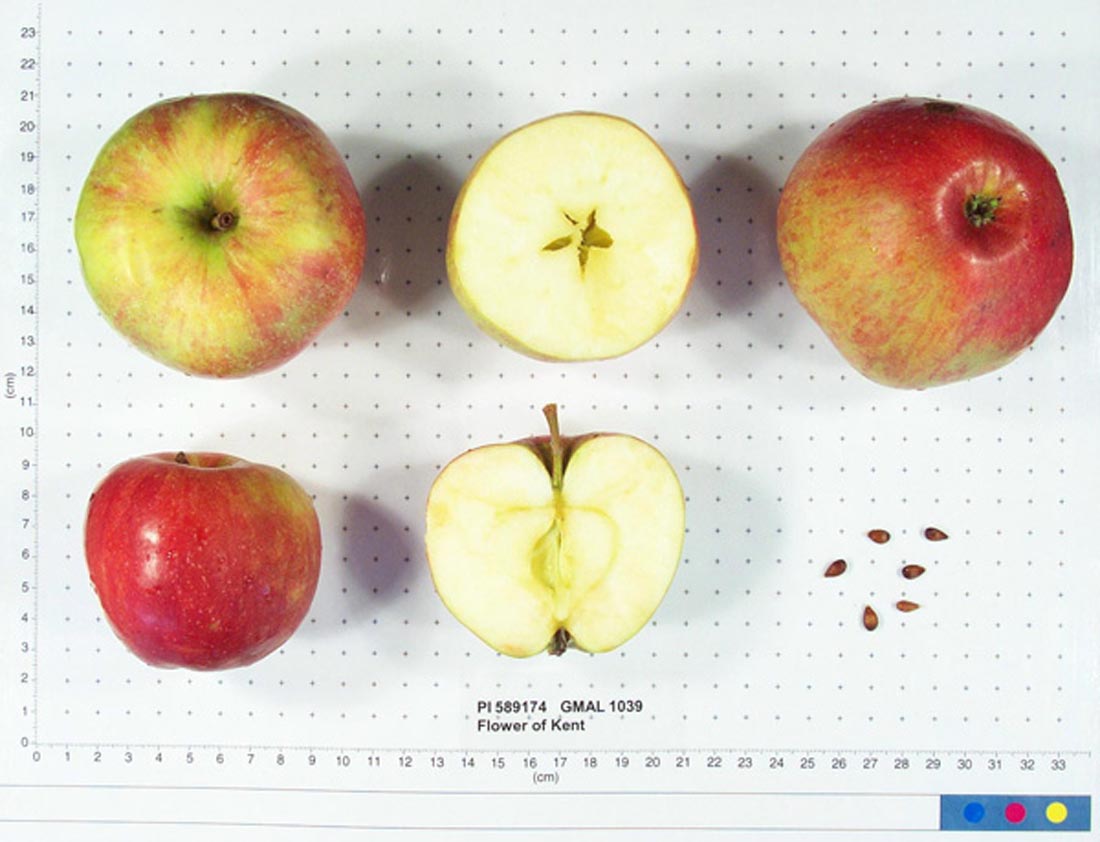Pomiferous
Welcome to the world's most extensive apples (pommes) database.
Information on over 7,000 apples is available here, all carefully researched and provided in a way that is easy to navigate.
Flower of Kent

type: Cooking, Culinary, Sauce
synonyms: Issac Newton, Issac Newton's Apple, Isaac Newton's Tree. Not the same as Beauty of Kent .
identification: Large, pear shaped.. Heavily and irregularly ribbed with wide ridges at the crown. The skin is light green to olive washed bright red and striped where exposed to the sun. The calyx is small and partly open, set in a moderately deep and narrow basin which is surrounded by an irregularly knobbed crown. The stem is short and slender, set in a medium deep and narrow cavity which often has some swelling on the side and brownish russeting.
characteristics: The flesh is white, coarse-grained and somewhat mealy. Very juicy and sweet, lightly acidic.
uses: A cooking apple; makes a sweet, flavourful sauce.
origins: Though this cultivar likely originated in France, it was first documented in 1629 by John Parkinson in Sole Pardisus Terrestris.
cultivation: Vigorous, upright spreading tree. Bears fruit on the tips. Crops tend to be sparse.
cold storage: Keeps up to three months.
harvest: In the middle of the fourth period.
notes: This is the apple that caused Isaac Newton to understand gravity. It grew in Newton's garden at Woolsthorpe Manor, near Grantham, Linconshire (U.K.) in 1660, but died in 1814. Fortunately, grafts were taken from the tree and the Fruit Research Station at the East Malling Institute in Kent (U.K.) is the primary source for grafts.
pollination group: F
pollination peak: 21
ploidism: Diploid. Self sterile.
cold storage weeks: 12
harvest period: 4
Donate a cider?
©2016-2021 Pomiferous.com. All rights reserved